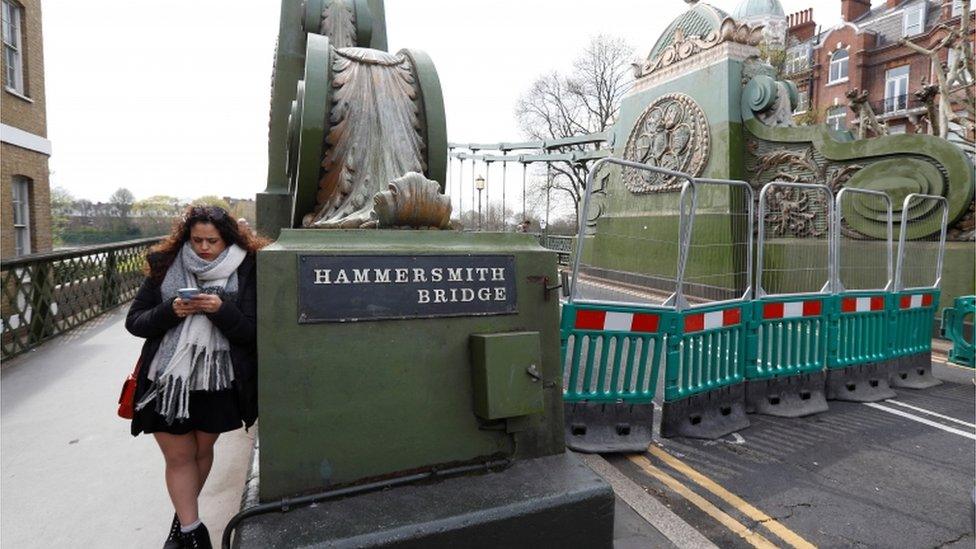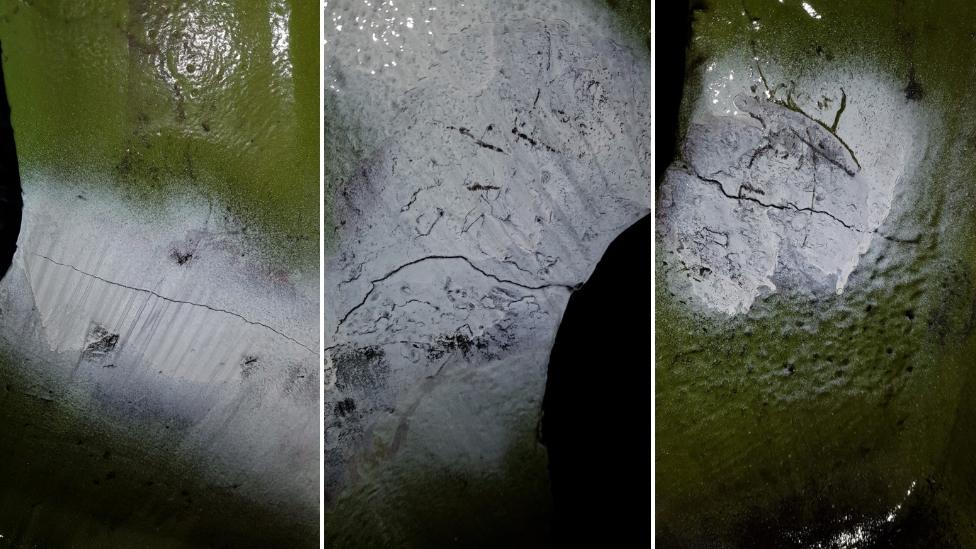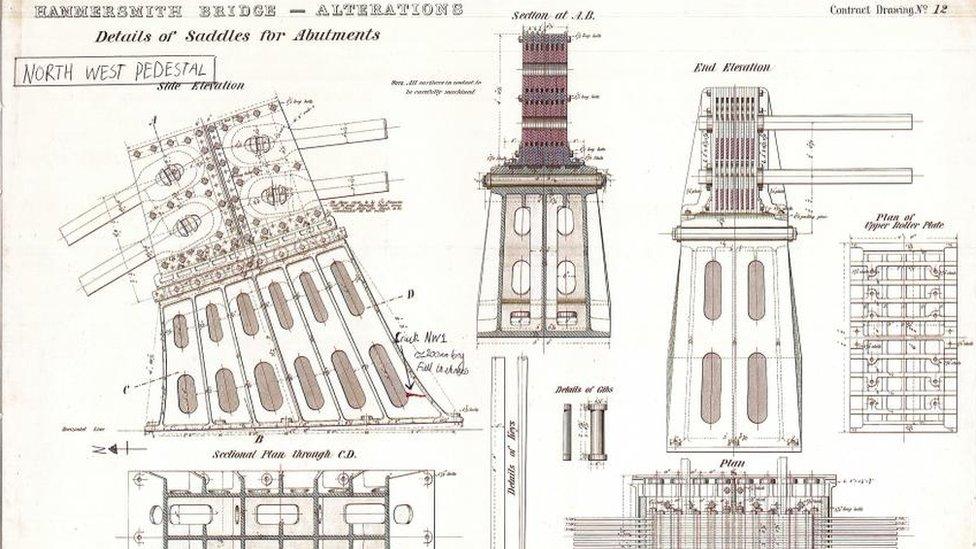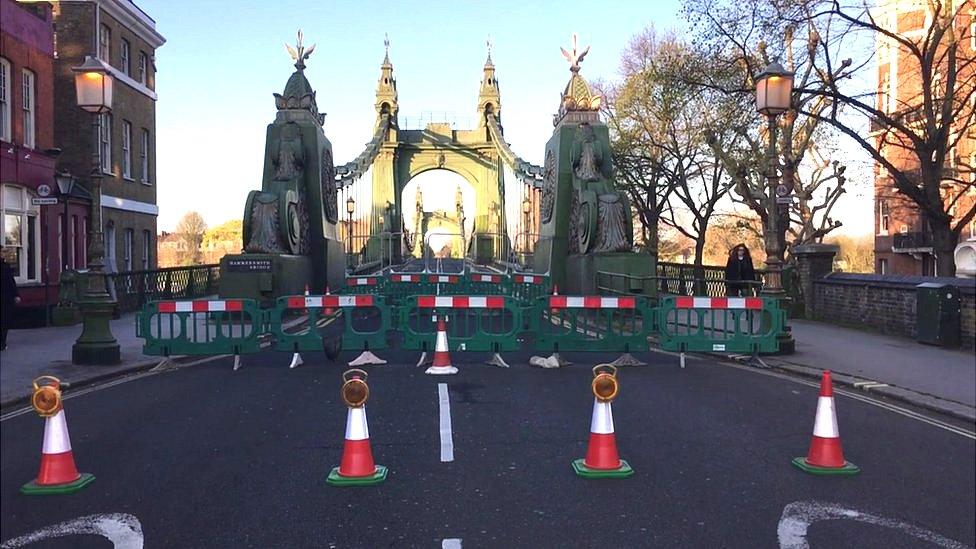Hammersmith Bridge closed because cracks in pedestals
- Published

Pedestrians and cyclists can still use the crossing between Hammersmith and Barnes
Hammersmith Bridge has been closed because of cracks in its pedestals, the footings which support the structure, it has been revealed.
In April, Hammersmith and Fulham Council said it had "no choice" but to shut the bridge to motorised traffic.
It has also emerged that engineers were monitoring the bridge when crowds congregated on it to watch the boat race - five days before it was shut.
Transport for London has been approached for comment.

Cracks have appeared in the north west and south west pedestals of Hammersmith Bridge
A Freedom of Information (FOI) request by the BBC revealed that safety checks found the bridge's supports had seized up due to corrosion, causing flexibility to become compromised.
This had caused "hairline micro-fractures" in the iron casings around the pedestals of the bridge.

One of the cracks is located in the base of the north west pedestal, according to architectural drawings released by Hammersmith and Fulham Council
Private vehicles and bus services have been banned from using the bridge but pedestrians and cyclists still have access to the crossing, from Barnes to Hammersmith.
The bridge opened in 1887 and requires reinforcing to cope with heavy motorised traffic.
The council had previously threatened to close the bridge after its strict rule allowing only one bus to cross at a time was broken.
A team of "18 world-class specialist engineers" are currently reviewing the bridge, Hammersmith and Fulham Council said.
It may take up to three years to repair the Grade II-listed, 132-year-old structure.
- Published11 April 2019

- Published30 November 2016

- Published25 January 2014
